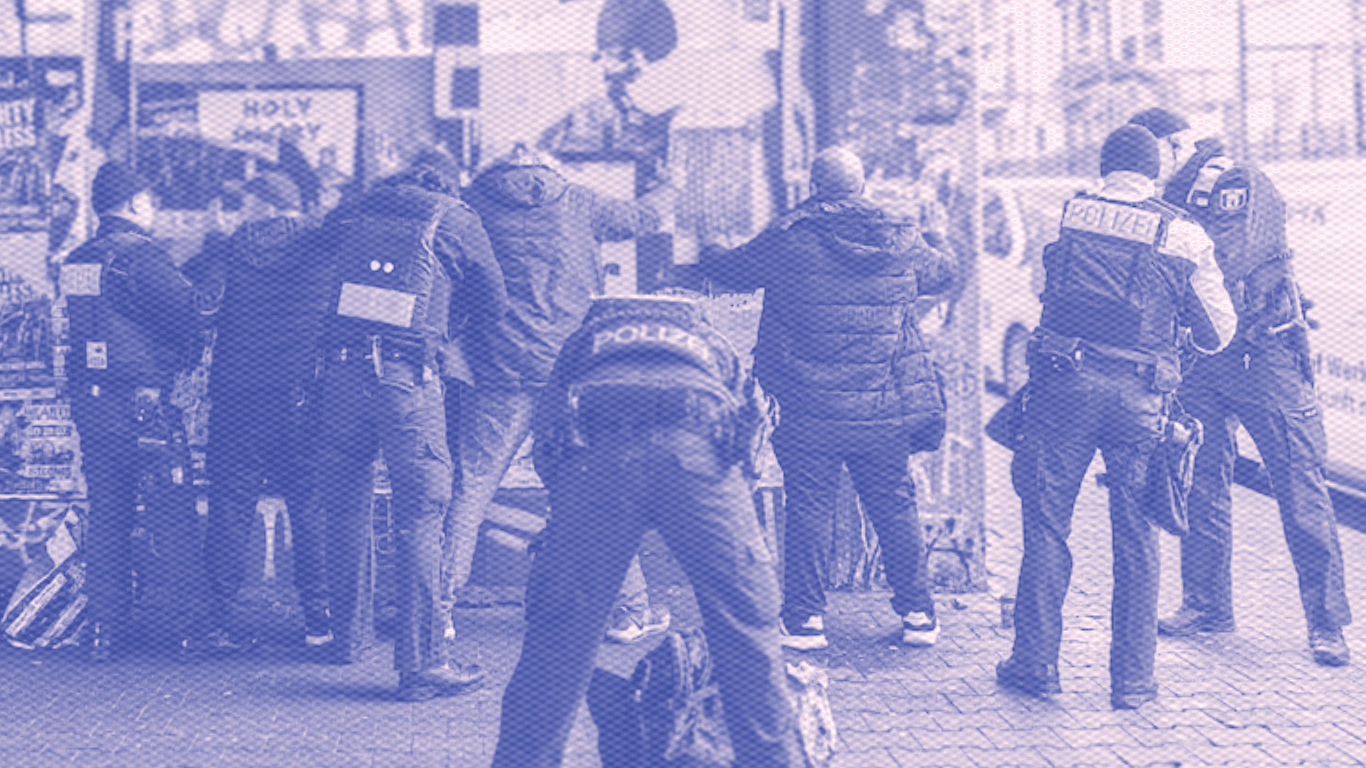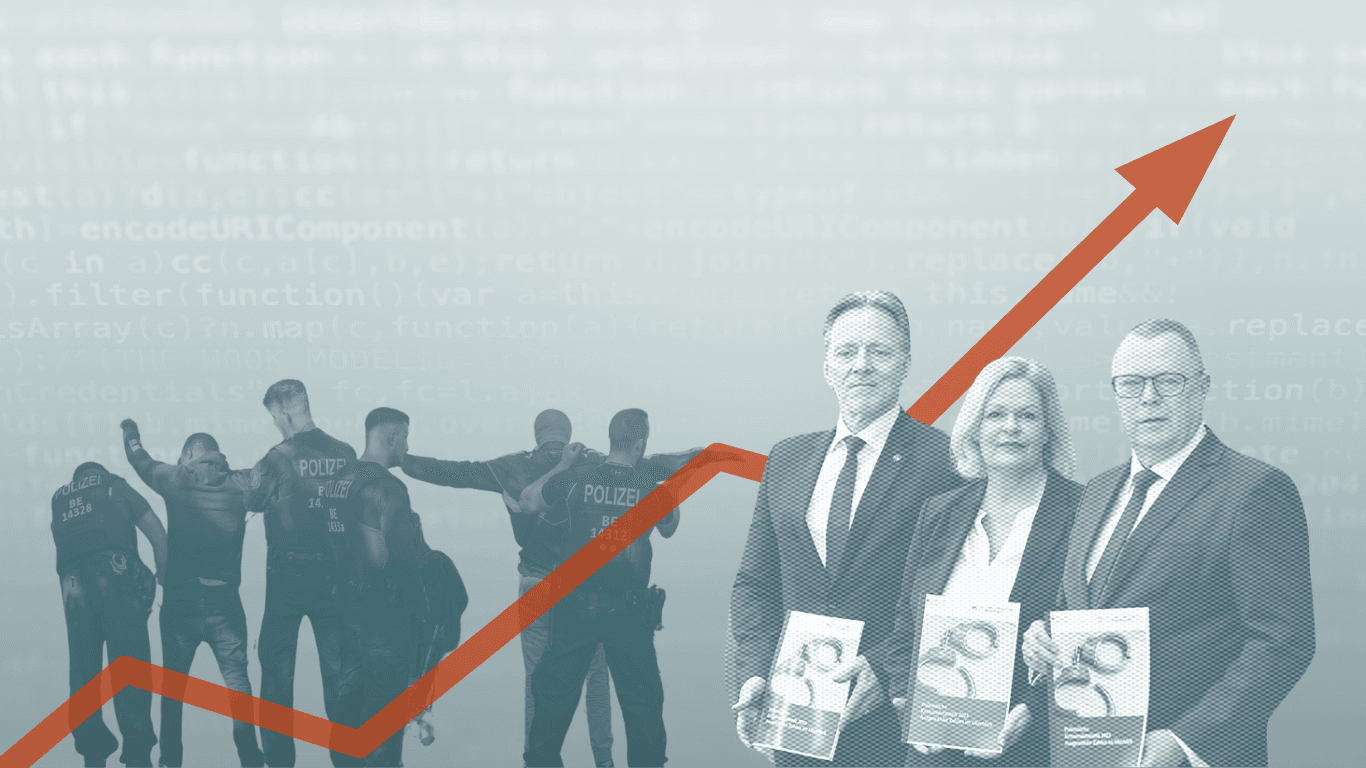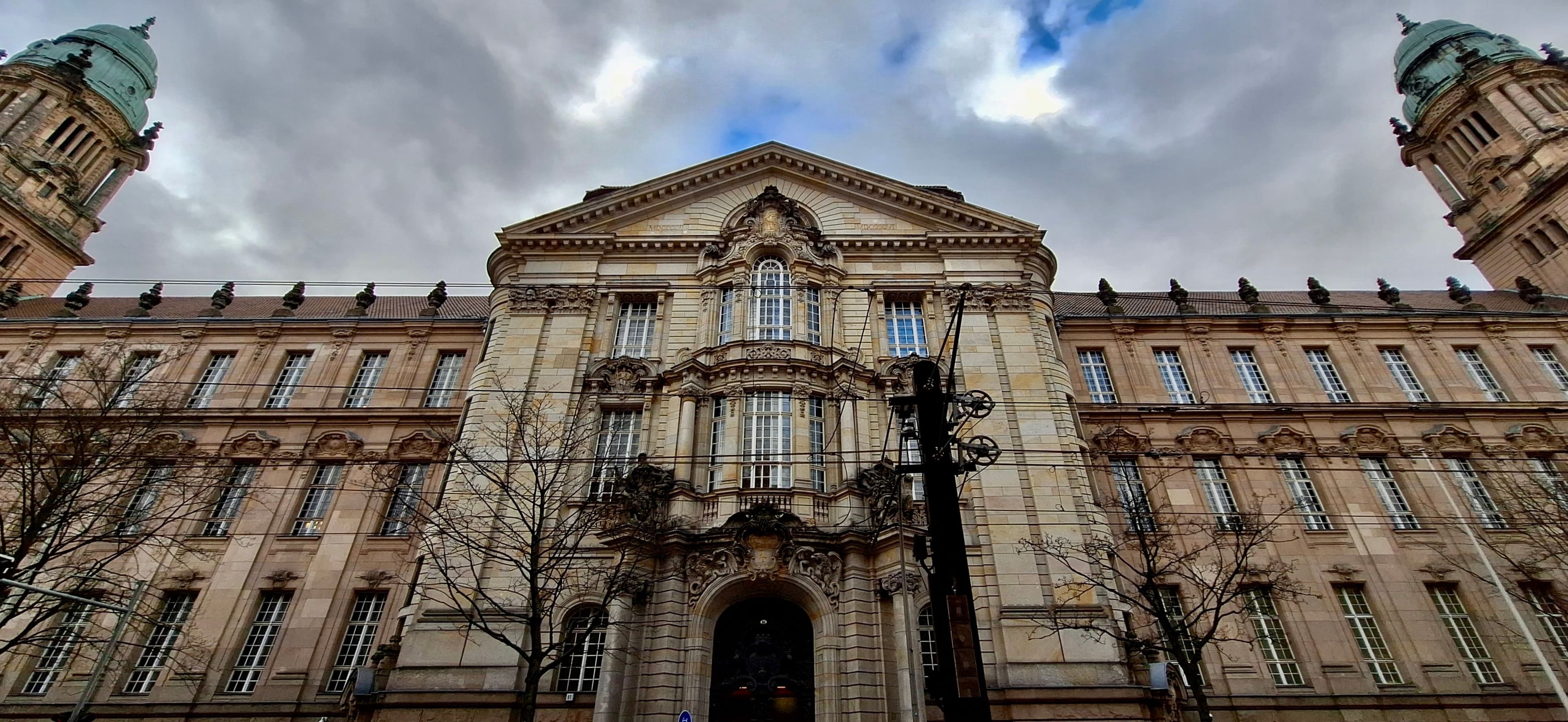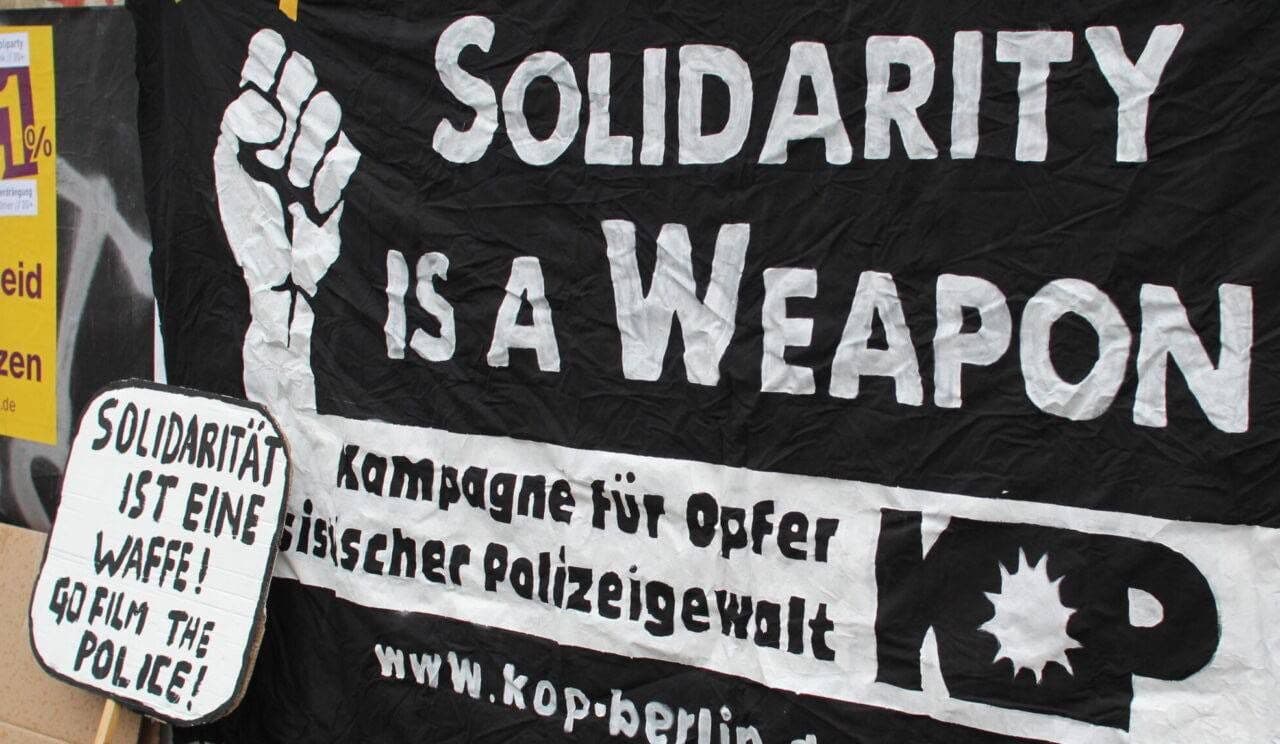Case 24
| Case Number | 24 |
| Charge | Assault, Drug Offense, Other Offenses |
| Defense Attorney Present | Yes |
| Interpreter Present | Yes |
| Racialized Person | Yes |
| Outcome | Prison |
The court hears a case in which a young man is accused of multiple charges, including drug, assault, and robbery charges, some of which involve a knife. After 6 hearings, mostly consisting of taking evidence from police witnesses, the young man is sentenced to prison and mandatory drug treatment for a total of almost 7 years. The court does not take into account victims’ actual needs: victims are instead asked leading questions to support a harsh punishment and are ridiculed by the court. The structural context of the defendant’s actions is largely absent from the proceedings.
The German media and politicians are constructing a moral panic over “knife crime” to justify the expansion of police powers and repressive measures that first and foremost target poor and migrantized people in Germany. A key argument for a tough-on-crime approach to incidents involving knives is the idea that punishment creates safety. But this case shows that the criminal system is not capable of addressing harm and allows the state to evade responsibilities of care for people who need access to housing, healthcare and basic necessities. This gap is apparent for both the defendant and the victims. The defendant is a young migrant whose opportunities for income are limited and include criminalized labour and whose substance use issues are treated as a moral failing. The incidents occurred in an area that police control heavily and that the media portray as a “crime hotspot” and a “no-go area”. Over the course of the trial, victims were made responsible for being in the wrong place and often suspected of being involved in crimes themselves. Those who did not want to provide testimony were deemed non-compliant and the court attempted to secure their appearance by force, including by threatening fines and arrest. In their absence, racialized victims were ridiculed by the judges even as they later used the harm they suffered as a rationale for an extremely harsh sentence against the defendant. Furthermore, institutional failings of the police, such as their failure to adequately attend to victims’ injuries or were ignored. Ultimately, this case challenges the idea that the severe punishment of a young man who is now being stripped of his freedom, whose ability to receive healthcare is further limited, and who will likely be deported, is justice or creates safety for anyone.
The defendant is accused of multiple drug, assault, and robbery charges, some involving a knife. In our observations of the case, we identified three themes that emerged, which serve to structure this condensed report.
Police Testimony as Truth
For every charge of robbery or assault, the primary evidence of the incident and its nature was from police officers who were called to make a report or who were involved in arresting the defendant. In some cases, the police testimony was the only evidence consulted, because some victims were absent from the court or could not be reached by police and prosecutors to testify. In most cases, the police arrived after an alleged incident occurred, so the testimony consisted of second-hand descriptions from questioning victims or evidence found at the scene.
One police witness describes a victim of an alleged assault as someone “known to local police,” then adds, “I mean... phenotype Black African” and calls the witness highly uncooperative. The arresting officer describes the defendant by “phenotype” too, testifying that he can be sure that he arrested the right person because he “knew his face,” despite not witnessing the fight and briefly having lost track of the suspect during the chase.Throughout their testimonies, all four officers speculate about drug use by both the defendant and the victim, although they had no clear indications that either were using drugs. Only one officer, who questioned the victim again hours after the incident for unknown reasons, said that he conducted a breath test and found alcohol in the victim’s system.
Without exception, all victims in this case were questioned by police on their drug use, and those who testified in court faced probing questions about why they would frequent an area where drugs are being sold. In two cases, the police claimed that the victim and defendant seemed to have known each other and that a fight between them likely broke out after they had attempted to buy drugs. This speculation was also reflected in the police reports. Although the victims clearly stated to the police and to the court that they had no relationship to the defendant, the police officers repeated their narrative in court.
Hostility and Neglect in Court’s Treatment of Victims
At various points in the questioning of the victims, the court suggests that at least some of the blame for being harmed lies with them for frequenting certain areas at night. Towards the end of their respective testimony, each victim is asked how the event has impacted them and whether they have experienced changes in their lives as a result. The court specifically asks each person whether “they now avoid certain areas late at night.” Many victims seem to perceive this question from the judge as a test to see whether they have learned their lessons, and some answer “yes” after a moment of hesitation. It is this response that is ultimately cited in the sentence as evidence of the deep psychological harm that the defendant supposedly caused, serving as a rationale for a harsh prison sentence.
In addition to blaming victims, the court threatened victims who did not want to testify. One victim, who did not want to interact with the police and was repeatedly described as non-compliant, was given a police summons order and a fine early in the process to force him to attend the trial. Only in the final hearing did the court drop the summons order and fine, realizing it had sent the letters to the wrong address. In his stead, four officers were asked to testify. None of the four officers who interacted with the victim provided medical assistance for the victim’s head wounds, which did not prompt further questions from the court during their testimony. The court openly joked about the not-present victim for having a similar name to another victim in the case, saying they needed to be careful not to fine and summon the wrong person.The judge repeatedly made derogatory comments in the victims' absence, such as speculating about one victim’s relationship to crime based on a “street name” that a police officer wrote down.
Victims who were scheduled to testify were repeatedly not informed of hearing schedule changes. The court also sent three summon letters incorrectly. One victim was asked to send a court summons letter for another witness via messenger instead of issuing a court summons by letter altogether. This victim further lost two days of income because of the changes in the schedule and was not given correct forms to apply for witness compensation, which meant that he had to navigate the procedure alone without help from the court. When the victim raised to the judge that his friend may have to work and might not be available on short notice, the court replied, “court comes first.”
Finally, victims faced the risk of criminalization at various points during the procedure. One man, who was involved in an alleged assault and robbery, was asked repeatedly whether the fight was about money, whether the victim had owed the defendant money because of involvement in dealing drugs, and whether he had attempted to buy drugs from the defendant. Even though the victim stated that he did not know the defendant, nor did he buy drugs and that he simply lived in the area and was on his way home from buying groceries, the court questioned his account and interrogated three other witnesses – including two police officers – whether they believed the victim was consuming drugs. After both witnesses testified that the victim seemed a bit confused after the incident, the court began to question the victim’s credibility. The judge asked the police officer directly, whether they had suspected the victim of having committed a crime as well when they were taking his statement at the police station. The police officer confirms that the victim’s belongings were searched and he was questioned on his drug use.
Criminalization and Pathologization of Drug Use
We learn a lot about the defendant through his probation report and a forensic expert. His probation record contains details on the defendant’s social circumstances and relationship to the punishment system, including that he does not receive any welfare support because of an unclear residency status, that he has been attested to have serious drug issues in the past, but that he is not receiving therapy and is not enrolled in a substitution program.
A forensic expert testifies. Her account is important to the court’s analysis of whether the defendant’s substance use should count as a mitigating factor, and to decide whether he should serve his sentence in a high-security psychiatric facility. She says at an early hearing that her impression of the defendant is that he had severe drug issues at the time of the offences but that he has gotten better since he has been incarcerated. When witnesses are questioned, she asks them about their perception of the defendant’s state and clothing. The judges eventually take on this line of questioning as well, seemingly trying to get an image of the “milieu” in which the defendant and sometimes the victims are to be placed. For example, the court asks witnesses questions about the defendant’s clothing and physical health, his hygiene, and whether he looked like someone who might be unhoused.
The forensic expert presents a report to the court at the end of the trial to assess the defendant’s clinical dependency on drugs and how his substance use should influence the sentencing. She begins by presenting details of the defendant’s upbringing and journey to Europe, which he relayed to her during a visit in prison. Many of the violent experiences the defendant had during his childhood and during the border crossing seemingly evoke no response from the judiciary. For example, the forensic expert explains that he did not finish school in Germany because “there were problems,” suggesting that the defendant was causing trouble. Yet she later says the defendant had to move towns to attend another school due to racist harassment from students who repeatedly called him the N-word. The forensic expert, a white woman, says the word in full.
The expert diagnoses the defendant with a severe clinical addiction to multiple substances.. She repeats that the severity of the young man’s addiction should be taken seriously since it led him to neglect all other aspects of life, highlighting his failure to procure housing, a job, or take care of his residency status from the moment that he consumed drugs. Nevertheless, she is of the opinion that he could distinguish between “right and wrong,” and that the offenses should all be seen as "procurement crimes.” She does not diagnose him with any mental health issues and therefore concludes that he should not serve his sentence in a high-security psychiatric facility. She does, however, recommend that he be placed on mandatory drug treatment.
All court actors, including the defense attorney, draw direct connections between drug use, the defendant’s migration history, the areas he frequented, and violent crime. In his closing argument, the lawyer says his client is a very young man who “brought crimes upon himself” because of his addiction, history of migration, and because he was always around this “drug-ridden” area. When a sentence is given, the judge reiterates that he believes the defendant to be a “fine guy” if he weren't always up to mischief in these areas where drugs were being sold. The harsh prison sentence of seven years, including mandatory drug treatment after two years of incarceration, is framed as an opportunity for self-improvement and to do vocational training. The judge adds that the court doesn't know if he will be allowed to stay, let alone work, in Germany once he is released, but that the defendant should nevertheless see this punishment as a chance to work on himself.



